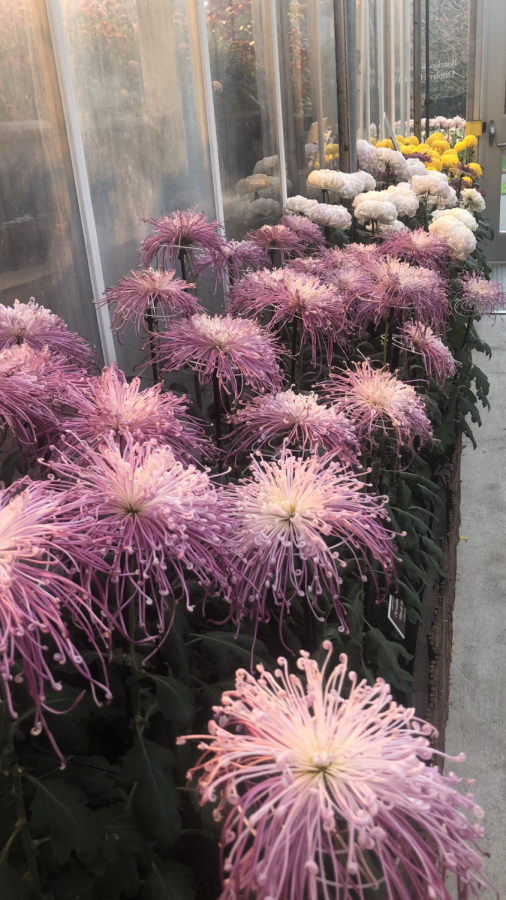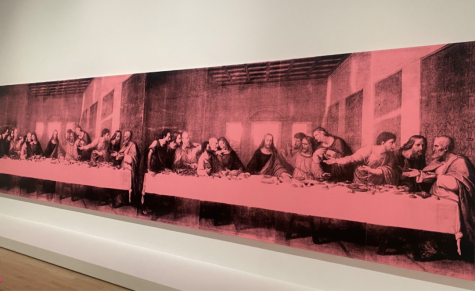The New York Botanical Garden’s “Kiku: Spotlight on Tradition”
The New York Botanical Garden’s (NYBG) annual “Kiku” exhibit returns in 2019 with “Kiku: Spotlight on Tradition,” and it is as spectacular as ever.
A plaque introducing the exhibit explains the significance of kiku, which translates from Japanese to “chrysanthemum.” The plaque further explains how kiku stole the heart of the Japanese emperor when the flower first arrived in Japan in the fourth century. The emperor adopted the delicate plant as his crest, and it remains the emblem of the Imperial Family today.
“Kiku” presents a myriad of chrysanthemums. According to the NYBG, “horticulturalists spend 11 months each year using traditional Japanese techniques to nurture and train kiku into both modern and ancient styles.” The exhibit celebrates Japanese tradition and showcases vibrant colors for the last time before winter.
“It explores a lot of the art form that exists when it comes to growing flowers in different parts of the world,” said Michael Battersby, a NYBG staff member.
The intricacies of growing the flowers are seen immediately in the spider chrysanthemums, which line the corridor. They stand supported by wire stilts and look like pom poms with curls at their ends.
Numerous other NYBG staff explained kiku as “an homage to royalty.” Throughout the exhibit, visitors can read about the origin of its majesty, such as in this note: “In 1878 the Japanese Emperor hosted an exclusive party to view chrysanthemums in his gardens. By the 1920s this had become an annual public event at Tokyo’s Shinjuku Gyoen National Garden.”
The kiku give off a powerful aura. Towering structures, as well as small, delicate arrangements entrance viewers.
Upon entering the main room of the Nolen Glasshouse, the centerpiece, titled “Snow-Capped Mountain,” captures your eye. Maroon kiku form the base and white kiku top what indeed looks like a mountain.
A plaque speaking for the NYBG horticulturalists explains the process behind making the mountain. “We adapted the kengai style to create each point of the star that forms the mountain’s base. A potted white-flowering kiku plant is the finishing touch,” it says. Kengai is the style in which a kiku is grown from a single pot, then slowly shaped to create a cascading effect.
Other structures include “edo,” where chrysanthemum petals twist in different directions as the blooms age. This design creates a kiku that looks full, like a lotus. Other kiku are placed over a rock or on thin trunks resembling bonsai trees. Kiku hang from the ceiling like garlands and, at the end of another hallway, some form a windmill shape. The rooms are filled with kiku top to bottom, affecting a wondrous aura. It is unbelievable that such different structures are all chrysanthemums.
The exhibit is also interactive. Different plaques prompt visitors to call different phone numbers to learn more. One plaque asks, “Why do Chrysanthemums need darkness in order to bloom?”
I called and learned kiku are “short day plants,” meaning they grow in the fall when the days are short and darkness prevails.
The “Kiku” team begins creating a false fall in July by covering the plants in cloth in the afternoon, then uncovering them in the morning. With this method, kiku bloom by October rather than November.
“We’re tricking the plants into thinking the days are shorter than they actually are,” said James Harkin, the foreman of the Nolen Glasshouses, in a pre-programmed message over the phone.
Many visitors come to the NYBG specifically to see the kiku. Amy Moffatt is a frequent NYBG visitor who makes sure to come when kiku are on display.
“I thought it was beautiful,” she said. “I like the fact that it’s a Japanese tradition and they do it every year in Japan.”
Through adopting this tradition, the NYBG has brought Japanese culture to America in an exciting and inspiring way.
“Kiku” is a wondrous exhibit, not only displaying centuries of culture via nature and handicraft, but also the magic of humans interacting with wildlife to create something wholly beautiful.
Be sure to see “Kiku: Spotlight on Tradition” before it closes on Nov. 18, 2019.

Sara Tsugranis is a sophomore at the Fordham College at Rose Hill, majoring in political science on the pre-law track and minoring in Orthodox Christian...














































































































































































































